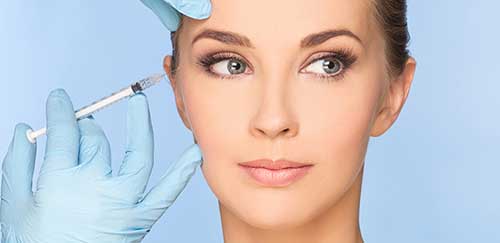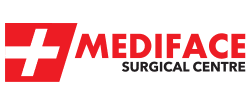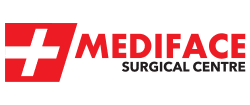MEDICAL AESTHETIC
The excessive sweating of the whole body including especially the armpits, hands and feet which is also evident by a significant feeling of discomfort is called hyperhidrosis.
The most effective and the easiest way of treatment is injection. The Botulinum toxin is temporarily blocking the chemical transmissions of the nerves stimulating the sweat glands, which results in decrease of excessive sweating. Excessive sweating stops when the sweat glands cannot receive any chemical transmissions. The procedure lasts for 10 minutes.
The effect is visible from the third day on and lasts depending on the person up to 8 months. If required the procedure can be repeated. For more detailed information please click the following address.


The wrinkles in the face area are caused by the contractions of mimic muscles lying under the skin. Of the non-invasive face rejuvenation methods, we are using therapy mostly for the treatment of wrinkles in the upper part of the face and filling material injections for the wrinkles at the lower parts of the face

Replace volume under the skin to fill wrinkles or enhance facial features.
Procedure
Soft tissue fillers, also called dermal fillers, facial fillers, or simply “fillers”, are used to fill up defects in the soft tissues, typically wrinkles, folds and dents in the face. Some fillers are intended to add volume, for example to the cheekbone or the chin and are often used for lip enhancement.
There are many products on the market. The most important distinction is between non-permanent fillers, which disappear spontaneously after a while, and the permanent fillers, which stay embedded in the tissues forever. Most non-permanent fillers are quite safe to use, but it is advisable to demand fillers that are generally accepted, or FDA approved, such as the ones based on hyaluronic acid, collagen and calcium hydroxyapatite microspheres. Always ask which product your physician is going to use.
Fillers are injected directly into the area to be treated, often after application of a topical anesthetic cream. The effect is immediate, and lasts between two to 18 months, depending on the type of product used and the area treated.
Length
Ten to twenty minutes.
Anesthesia
Usually topical anesthetic cream, sometimes a local anesthetic injection.
Inpatient/Outpatient
Outpatient.
Possible Side Effects
Transient swelling (mainly when used in the lips), redness, tenderness, and bruising. Cold application after treatment can minimize these side effects.
Risks
There is widespread consensus that, although they may seem appealing, permanent fillers are not to be recommended lightly as they sometimes induce adverse reactions which are very difficult if not totally impossible to treat without surgery. For all fillers, risks include irregularities or lumpiness, over- or under-correction, asymmetry and infection. Permanently visible lumps or late reactions with some permanent fillers can result.
Recovery
If present, swelling and redness usually settles after 24 to 48 hours. Most patients can go back to their activities immediately with some make-up.
Results
Partial or complete correction of wrinkles and folds. Enhancement of facial features.

PRP FACIAL REJUVENATION
Platelet Rich Plasma (PRP) has been used in facial rejuvenation around the world since 2006. The treatment is ideal for individuals looking for gradual but noticeable improvement in skin texture, tone, and color with minimal or no recovery time. This revolutionary natural procedure offers incredible skin rejuvenation. Platelets in your blood contain numerous Platelet Derived Growth Factors (PDGF). These growth factors stimulate proliferation of fibroblasts and keratinocytes, which produce collagen and keratin. PDGF have a significant role in blood vessel formation. The cellular division of fibroblasts (the most common cells in connective tissue), and in synthesizing collagen and the extracellular matrix, including hyaluronic acid. Collagen production has been attributed to helping correct the visible effects of wrinkles. Hyaluronic acid has been shown to increase skin tone and volume providing a more youthful appearance.
This procedure is not a surgical face lift nor does it create the same effect as a face lift. The procedure helps restore or enhance areas, which require volume. Improvement of skin texture and tone can be noticeable within three weeks and improvement continues for the next 8 months as more collagen and keratin is laid under the skin. The results typically last 2 years or longer. Areas of treatment include cheeks and mid-face, wrinkling around the eyes, smile lines, nasolabial fold, neck and jawline, chest, acne scarring, hands, and more. The process takes between 60-90 minutes, depending on complexity. For the best result, we recommend three to six treatments, 4-6 weeks apart.
What happens during a facial rejuvenation treatment with PRP?
The practitioner will assess the degree of skin aging, perform a simple skin analysis, and recommend a sensible treatment with a reasonable outcome. After your skin is cleansed and prepared, local anesthetic cream is applied and nerve blocks may also be given. Blood is then taken from your arm and processed. For treating the entire face, PRP is injected via a syringe and applied to the skin with a derma roller. For treating specific areas such as around the eyes and laugh lines, PRP is carefully injected to the target area.
Is the procedure painful?
Numbing cream is applied to the face 45 minutes before the procedure, making the treatment very comfortable. Most patients do not feel much sensation.
How long is the recovery time?
Typically, there is little to no downtime associated with the treatment. Some redness of the treated area may last a day after treatment. Minor bruising may occur, but clears up in about a week and can be concealed with cosmetics. Normal activity can be resumed immediately, but your face should be protected from the sun.
How long is the treatment?
On the treatment day, the entire visit lasts about 2 hours. The actual procedure requires about 20 minutes.
Is it safe?
PRP treatment is extremely safe. Because PRP is produced from your own blood, there is no risk of an allergic reaction. In addition, PRP contains concentrated amounts of white blood cells, your natural defenders against infections. As a result, infection is extremely rare with our PRP treatment.
Are there any contraindications?
Persons with active skin infections, acne, skin disease (SLE, porphyria, allergies), cancer, chemotherapy, severe metabolic and systemic disorders, abnormal platelet function (i.e. blood disorders), and underlying sepsis should exclude the use of PRP.
Is PRP therapy covered by insurance?
As PRP Skin Rejuvenation is a cosmetic procedure, it is not covered by health insurance.
How much does PRP therapy cost?
An entire facial rejuvenation treatment including an initial consultation costs 250€. For smaller areas the treatment cost is less. Treatment packages are available with reduced rates.
How many treatments are needed?
Initially, 3 to 6 treatments 4-6 weeks apart are recommended for optimal results. Thereafter, maintenance treatments are recommended every one to two years depending on skin type.





